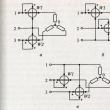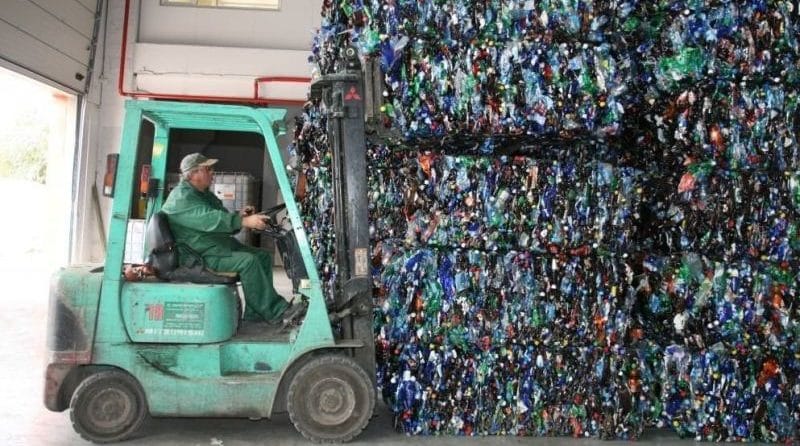Sections of the site
Editor's Choice:
- Business with China - where to start, how to find suppliers + TOP-15 goods from China and a list of trading platforms
- Where to invest 1000 dollars
- Three common misconceptions and six life tips
- How can maternity capital be used - what needs can be spent on maternity capital
- Caramel apples - a new idea for business
- Ready business plan for beginners
- Gypsum tiles for stone: 7 advantages of the material
- How to buy the best and interesting unusual goods from China for home, gifts and sale on Aliexpress in Russian?
- Business plan for opening a bath
- Where to spend maternity capital before the child is 3 years old
Advertising
| Mini plastic bottle recycling plant |
|
The environmental damage from plastic waste is obvious, and we see this garbage, unfortunately, almost every day. A significant proportion of soft drinks and beer are packaged in PET plastic bottles. A feature of this convenient PET container is that this plastic is very resistant, and its destruction lasts tens and hundreds of years. PET is polyethylene terephthalate (not to be confused with polyethylene) that can be recycled. Burning it causes no less harm than just burial. This is due to the fact that even at temperatures of 600-900 ° C, PET does not burn out completely, but partially combines with chlorine contained in waste, for example, in the form of PVC (polyvinyl chloride), forming one of the most dangerous poisons - dioxin. The lethal dose of dioxin for humans is 0.00001 g, which is less than for chemical warfare agents such as sarin and soman. Therefore, recycling plastic bottles as a business is not only about cleaning the environment, but also about caring for future generations. Consider what the full cycle of recycling plastic bottles includes. Recycling PET waste includes the following steps:
PET recycling business can be organized in a variety of ways. Naturally, the most profitable is a mini plastic bottle recycling plant, however, this is a profitable but very costly investment. Let's consider everything in order. Fundamentals of PET Waste Processing TechnologyPolyethylene terephthalate is known under the names PET, PET, PET, Mylar, Terlon, Lavsan (laboratory of macromolecular compounds of the Academy of Sciences) and others. This polymer with a density of 1.4 g / cm3 (heavier than water) becomes fluid at temperatures above 250 ° C, decomposes above 350 ° C. PET is a very resistant material that is insoluble in water, gasoline, relatively resistant to the action of dilute solutions of acids and alkalis. It is these properties that underlie PET processing technology.
There are other processing technologies - into motor fuel and decomposition into initial monomers. You can read how plastic bottles are processed into such products in special literature and find information on the Internet. However, as long as there is a demand for recycled PET, processing into pellets is the most cost-effective. Waste collection, sorting and shreddingUnfortunately, in our country there is no separate storage of waste and garbage, so collecting plastic bottles is a very difficult task. This task is further complicated by the fact that PET bottles have a very low bulk density. Usually, the description of mini-plastic processing plants does not include the stage of collection and preparation of raw materials. But in vain! Here are some numbers. Weight of a PET bottle with a volume of 1.5-2.0 liters 40-50 g. This means that 1 ton of raw materials is 20,000-25,000 bottles, which occupy a volume (without pressing) of about 15 m3! How do you collect them?
Let's immediately discard the great idea of installing imported racks for collecting bottles for money. This is good, but buying, installing and maintaining such equipment (several thousand dollars per unit) is not cheap. The real thing is the installation of special containers in the yards, sorting at waste processing plants. Taking plastic for recycling in landfills (yes, yes - homeless people are eternal environmentalists) is also very beneficial.
Once you have solved the problem of collecting used bottles, they need to be transported or shredded on site. You can grind it at a waste recycling plant or at installations in places far from residential buildings (the smell from used containers is still the same). Let's estimate the price of equipment for processing plastic bottles at this stage. |
| Read: |
|---|
Popular:
Power and energy measurement
|
New
- Moscow State University of Press Peculiarities of Marketing Activities at a Russian Enterprise
- Operational planning
- Operational planning is the drawing up of current plans for a short period of time Operational plan example
- Service sector in the global economy Specificity of Russia's GDP
- Organizational structures
- The geography of the pharmaceutical industry at the present stage
- Notification to Rospotrebnadzor about the start of entrepreneurial activity
- Where can an entrepreneur find a sponsor for a business?
- Where can an entrepreneur find a sponsor for a business?
- Documentation for the IA program






